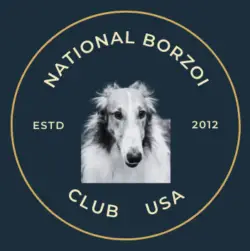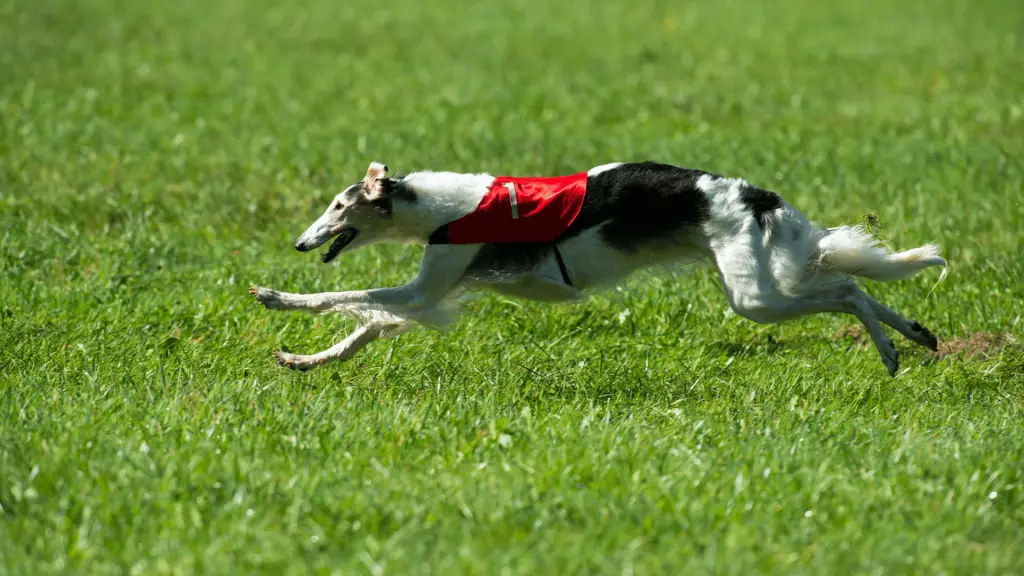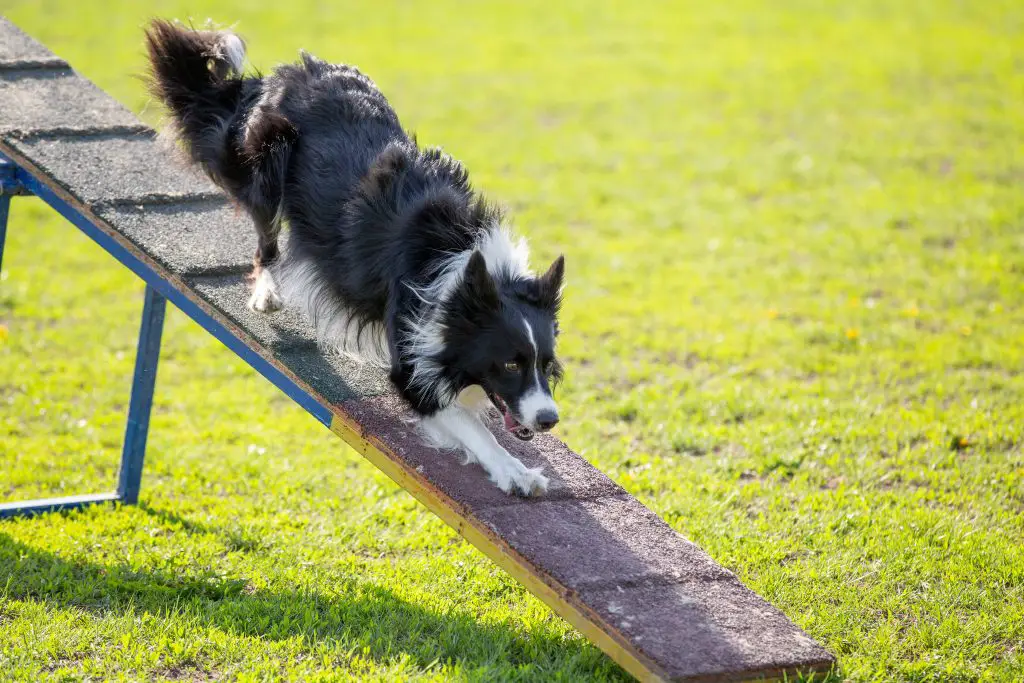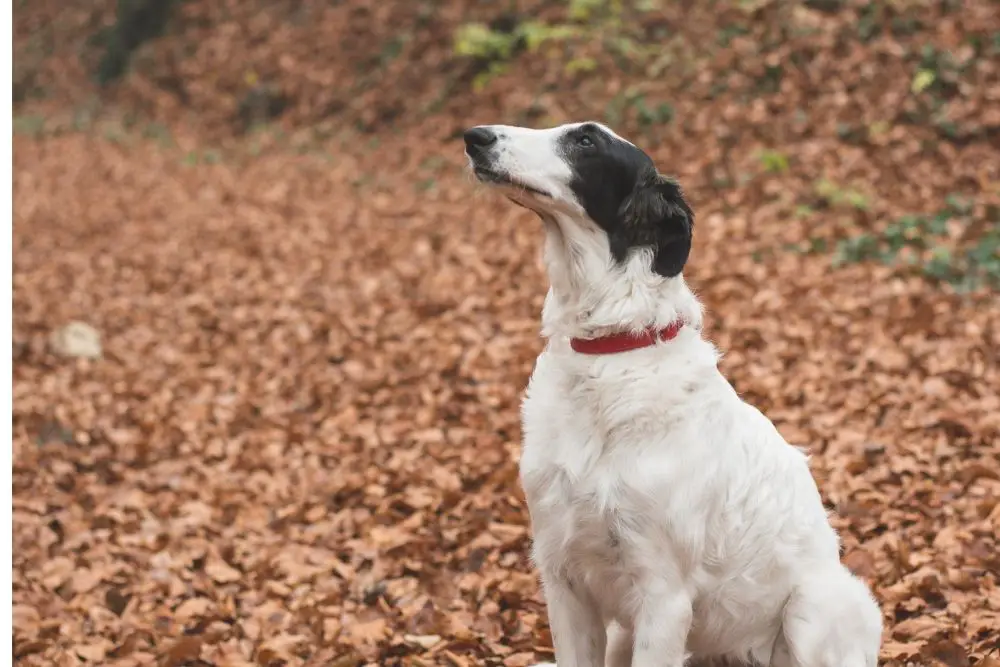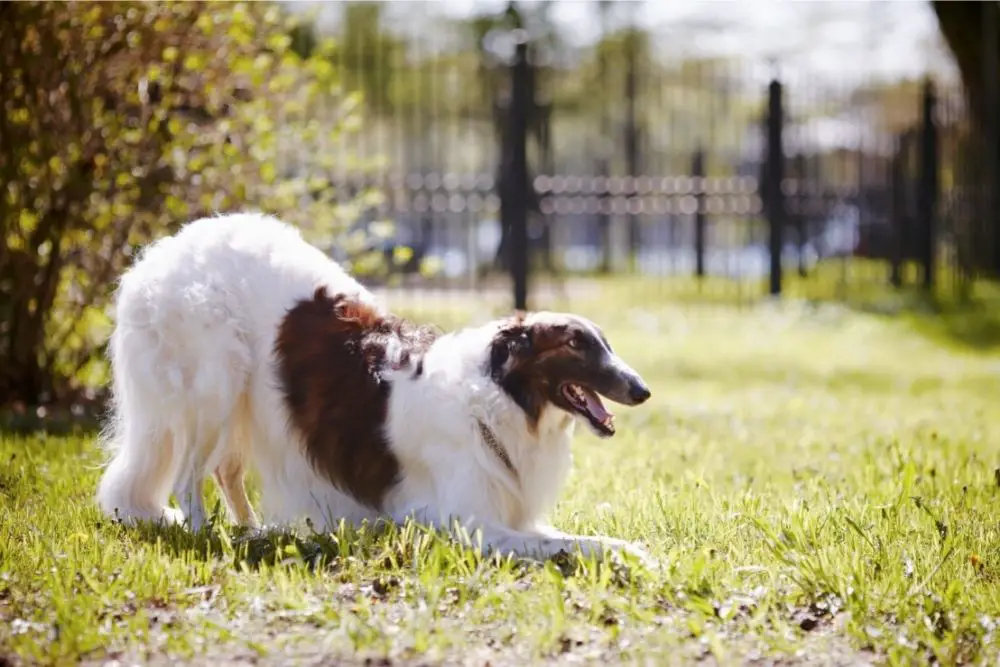Lure coursing dates back to the 60s and has become a popular dog sport in the years since. Watching your dog run at top speeds can be a great experience, and sighthounds benefit from engaging their hunting instincts and getting their chase on!
A lure coursing machine for dogs is typically a professional piece of dog coursing equipment, though there are machines made for use in backyards as well. The lure coursing pulley moves the lure, which is often plastic, across an open area using unpredictable movements to keep dogs interested in the chase.
In this article, we’ll discuss what lure coursing is, how to practice and qualify, whether it’s a good fit for your Borzoi, and how to ethically participate in lure coursing. We’ll also discuss how lure coursing is different to dog racing.
Table of contents
What is a Lure Coursing Machine for Dogs?
A lure coursing machine, also called a dog chase machine, is a piece of dog coursing equipment that creates artificial “prey” for dogs to chase. A lure is attached to a line and is moved at speeds up to 40 miles per hour.
These are typically used at lure coursing events, where dogs are put into small packs to chase the lure around a field. This simulates the hunt that sighthounds were bred for: chasing prey that runs in top speeds around an open field.
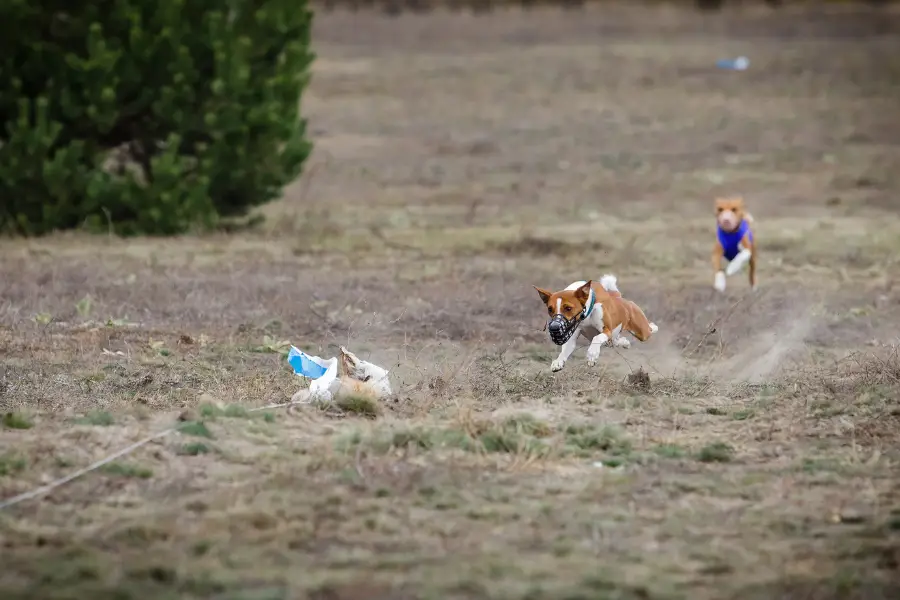
Lure coursing pulleys keep prey moving in unpredictable ways to keep dogs entertained and to satisfy their hunting instincts.
Lure coursing machines can also be kept in backyards for training purposes or just for fun! If you go this route, remember to ensure the yard is properly enclosed with tall fencing to keep your pup inside.
Does my Borzoi Qualify for Lure Coursing?
In order to qualify for lure coursing, a Borzoi must be at least one year of age. Typically, they must also be purebred.
Then, they must qualify for the event.
Both the American Kennel Club and the American Sighthound Field Association require your dog to run with other dogs. They will be watched to see if they chase the lure or interact with the other dogs. Dogs qualify if they can chase without getting in the way of other pups.
If your dog isn’t interested in the lure or is more interested in interacting with other dogs, they will not qualify.
This is okay—some Borzoi just don’t like lure coursing. Maybe take them on a playdate instead!
Borzoi Lure Coursing
As sighthounds, Borzois are great dogs for lure coursing. It’s an imitation of the wolf hunts they were brought on historically, all the way back in 1600s Russia.
Many Borzois enjoy lure coursing, but not all do. Some of them would prefer to chase a live animal or other lure, and don’t go after the plastic one typically used at coursing events.
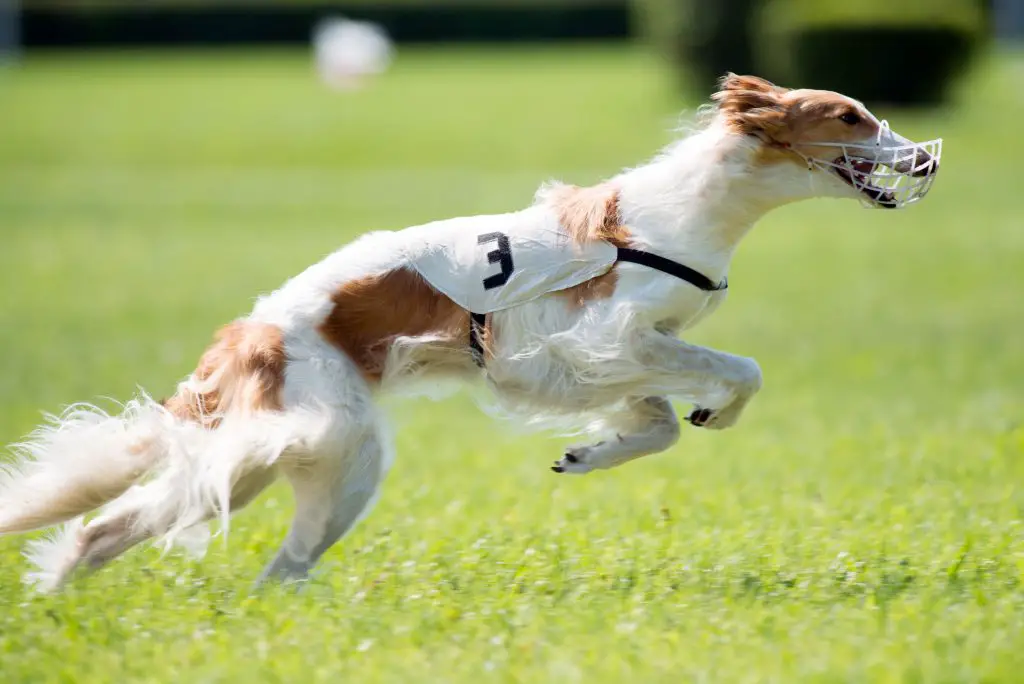
Others prefer to play with other dogs, which will disqualify them from the event.
The only way to know whether your Borzoi likes lure coursing is to try it out. Talk with others who participate in these events, practice at home, and see what happens!
If you’re unsure whether you like lure coursing, try attending an event or watching videos online to see how things are done.
How do you Practice Lure Coursing?
You can practice lure coursing by tying a lure such as a plastic bag to a fishing line with yarn (a little like a wand toy for a cat!) and encouraging them to chase it. Ensure that you use yarn, not string, as string can hurt your dog’s mouth.
This can also help you to determine whether your dog is even interested in lure coursing.
Move the lure around unpredictably to stimulate real prey. Allow your dog to catch the lure so that they feel a sense of pride like a true hunter!
Ensure they don’t eat the plastic, however, as this isn’t healthy for them. Instead offer lots of praise and treat your pup for a job well done. It is common for borzois to wear muzzles during coursing. Not only does it keep the plastic safe, it keeps the borzois from injuring each other.
Games of fetch can also engage the same instinct in your dog and might prepare them for chasing lure as well.
Socializing your dog around humans and other dogs will also help prepare them for the events, as will basic training.
Skills like heeling, for instance, may prepare them for ignoring other dogs and chasing the lure instead, although nothing will guarantee this happening—it simply comes down to what your dog is most interested in.
Basic training will also ensure your dog behaves before and after the event while you’re handling them. Of course, it’ll come in handy outside of coursing as well.
Is Lure Coursing Ethical?
Lure coursing engages hunting dogs’ natural instincts. Sighthounds specifically were bred to spot prey and chase after it at fast speeds.
However, many of these dogs are actively discouraged from hunting today. We don’t want our pups chasing squirrels across the street and potentially being hit by a car!

The goal of lure coursing is to give dogs like Borzois a healthy outlet. They are able to “hunt” in a controlled setting where they are fully enclosed and at less risk of injury.
However, lure coursing can be unethical if dogs are pushed too hard or trained using poor techniques such as punishment or dominance training.
Keep it fun, know your dog’s limits, and always use positive training methods.
How are Racing and Coursing Different?
You may know that Greyhound racing is highly unethical. Yet, coursing is quite similar to racing. Both are sports where dogs chase after a lure at top speeds.
How is coursing ethical if racing isn’t? It’s mainly in the way that these events are set up and the care the dogs receive.
Greyhound racing runs on profits. It’s much like the horse racing industry. More dogs are bred than are needed to race, in order to produce the fastest pups—as if they were items in a factory rather than living, breathing animals.
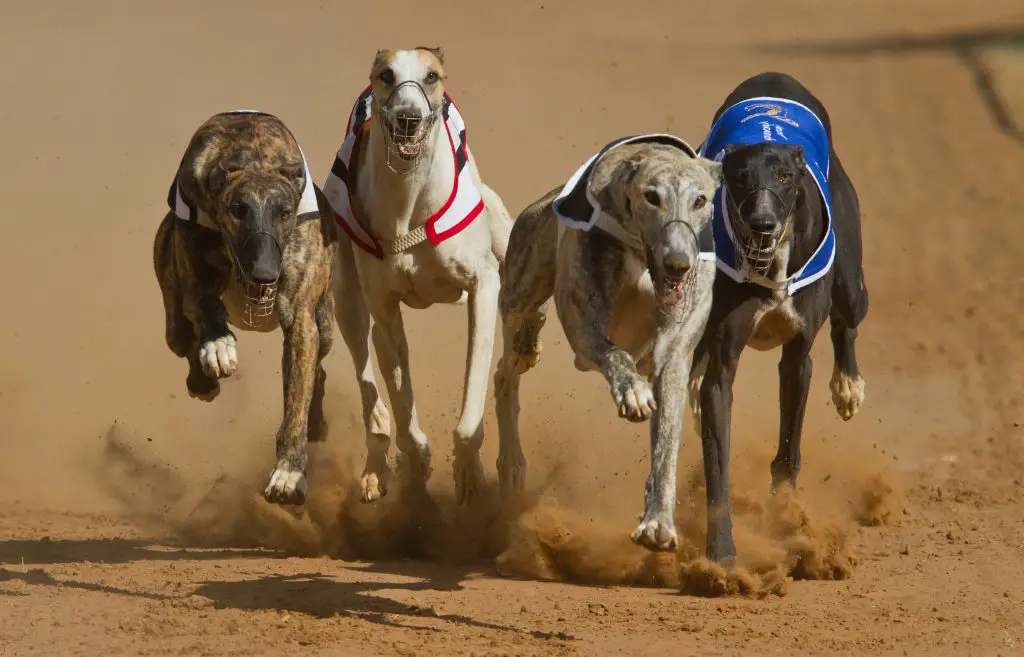
People take bets and gamble on the winners of the race, which creates a huge profit incentive to keep churning out faster Greyhounds—and unfortunately, to discard the dogs that aren’t making a profit.
Dogs are often injured or even die from racing. When a dog is no longer useful or profitable, they are typically killed. Luckier Greyhounds may find a foster home and be adopted into a family who will care for them properly.
In contrast, lure coursing is a sport that dog owners participate in. These people might breed dogs, but not by the thousands, and they’re typically (not always) treated much better than racing dogs.
Coursing is run by organizations such as the American Kennel Club. They have regulations such as a minimum age limit of one year and precautions are taken to keep dogs safe and free of injury.
However, the truth is that lure coursing can be unethical—it just doesn’t have to be. People can be cruel to their dogs in any circumstance, and sometimes competition can add to this.
As your dog’s owner, their wellbeing is in your control. Keep training fun and positive, and never punish your dog for getting it wrong.
Allow them to go at their own pace and never push them past their mental or physical tolerance when training or running. Coursing can be tough on a dog’s joints, and you should always ensure they are healthy enough to participate. Stop at any sign of discomfort or injury.
Lastly, ensure that competition is not yours or your dog’s whole life. Give your pup a full life that includes plenty of time to rest, socialize, and spend time at home with the family living the pampered life.
You know your dog best, so you can put an end to the sport if they’re no longer having fun with it.
What Other Lure Coursing Equipment is Needed?
The equipment you’ll need to bring with you depends on the organization you’re coursing with. However, it’s mostly things you already have as a dog owner in many cases.
Your dog will need to be collared and leashed, and some organizations may require a muzzle as well.
You may need a crate to contain your dog before or after the event. Dogs are typically covered in blue, yellow, or red blankets in order to more easily differentiate between them on the field, and you may have to buy one to participate.
Of course, you should also bring plenty of water to keep your pup hydrated.
When is it too Hot to Participate in Coursing?
Each dog has a different tolerance to hot temperatures, much like people.
Dogs can get heat stroke in temperatures as low as 60 degrees Fahrenheit. However, this usually applies to brachycephalic breeds or those with health problems that cause breathing difficulties.
Borzois are large dogs with thick coats, and these are two risk factors for heat stroke. Temperatures upwards of 75 degrees Fahrenheit may be risky and uncomfortable for your Borzoi, and no dog should run in temperatures over 82 degrees Fahrenheit.
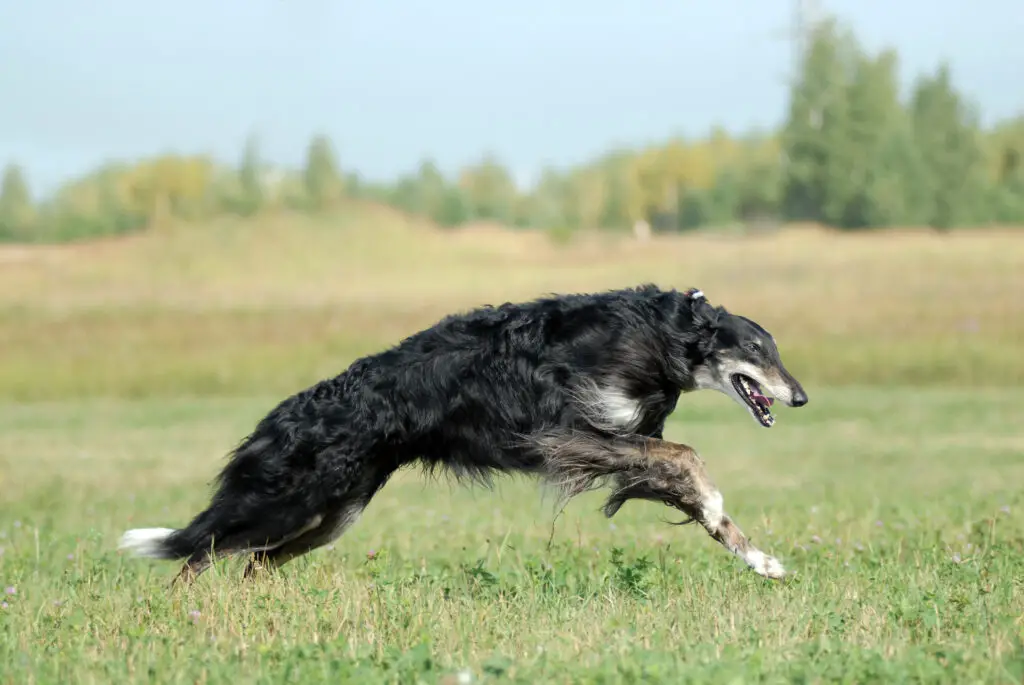
Always ensure your dog is properly hydrated and breathing properly during any kind of exercise, especially in the heat.
What is the History of Lure Coursing?
Coursing itself goes way back through history, as long as sighthounds have been bred. While we don’t know the origins of the first sighthounds, we do know that they’ve been used historically to “course” or aid in hunts across vast, open fields.
Borzois in particular would be brought out in small packs to chase wolves. When the wolf took off running, so did the dogs.
They pinned the wolves down so that the human hunters who joined them could either kill or capture the wolves. Captured wolves were used to train future Borzoi hunters.
Lure coursing began in the 1960s as a way to replicate these hunts. The first lure coursing machine was made in the late 60s.
